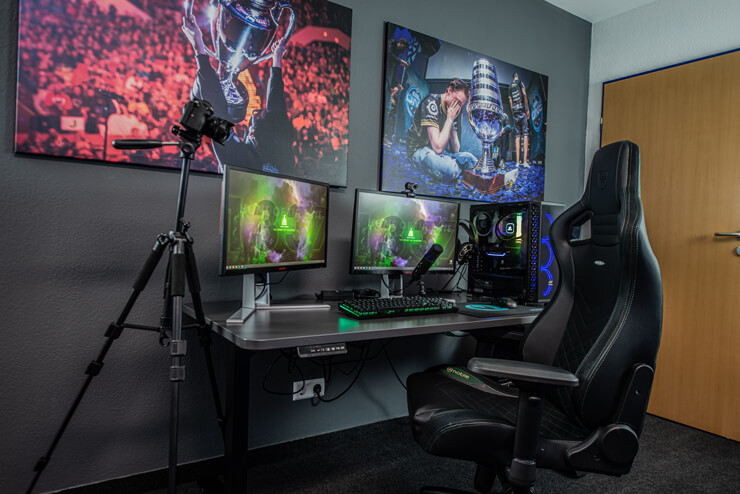A gamer’s room isn’t just a place to have fun — it’s a space where comfort and performance go hand in hand. The atmosphere and layout play a huge role in how immersive and efficient a gaming session feels. That’s why experts have put together some tips on how to design the ideal gaming space.
These tips are just as useful for fans of iGaming as they are for traditional video gamers. Many virtual gambling games are so engaging, they rival AAA titles and multiplayer experiences. Crash games are a great example — deciding to play something like Aviator on 1xBet can easily turn into hours of gameplay. So the setup needs to support that just like any extended gaming session would.

The Chair Comes First
Everything that isn’t the chair is secondary. You can have a top-tier setup, an ultra-wide monitor, and cyberpunk-style lighting — but if your seat is uncomfortable, the magic disappears within the first hour.
Back, neck, and arms need to be properly supported. Otherwise, you’re not gaming — you’re just surviving. A good chair adjusts in height and tilt, has a firm backrest and a headrest. The armrests should move too, not just stick out wherever. Choose breathable fabric over leather. It might look premium, but in summer, it feels like a punishment.
Lights, speakers, even built-in vibration — these extras can help if you’re streaming or going for full immersion. But if the goal is comfort and quiet for 5-hour sessions, these features fade into the background. The key is to keep your body relaxed and your mind on strategy — not on how much your shoulder hurts.
Color and Light Matter More Than You Think
Even the most powerful PC won’t save the experience if the room strains your eyes. Color isn’t just decoration — it’s a tool. It can calm, focus, or distract. Overly bright walls are a mistake. Harsh blues or neon greens are exhausting, especially at night.
Neutral tones work best: gray, white, graphite. They can be accented with posters, lighting, or a rug. The room shouldn’t shout — it should breathe.
Lighting is the other half of that balance. One overhead fixture isn’t enough. You’ll want desk lighting and soft side lighting — but not scattered everywhere. The goal is precision, not overload.
A warm-toned desk lamp eases eye strain. LED strips under the desk or behind the monitor create atmosphere. Light should work with you, not against you. Change the angle, tweak the brightness, and the whole gaming experience transforms.
The Desk Is Your Foundation
Your desk carries it all — gear, cables, food plates, and elbows that won’t move for hours. The ideal setup is sturdy, wide, and has enough room for not just your keyboard and monitor, but also your hands and space to breathe. Nothing should block your movements or your line of sight.
If you’re using multiple monitors, you’ll need to multiply that space. Screens shouldn’t overlap or crowd each other. Keyboard and mouse should sit on the same level. Cables should be managed — not tangled at your feet.
Height-adjustable desks are a solid investment. Not just for standing — but to tailor the setup to your height and avoid slouching. Plus, changing posture now and then helps fight fatigue.
As for materials — metal, wood, MDF — that’s less important than stability. Look for models with wrist cutouts or a textured surface if you hate glossy smudges and fingerprints.